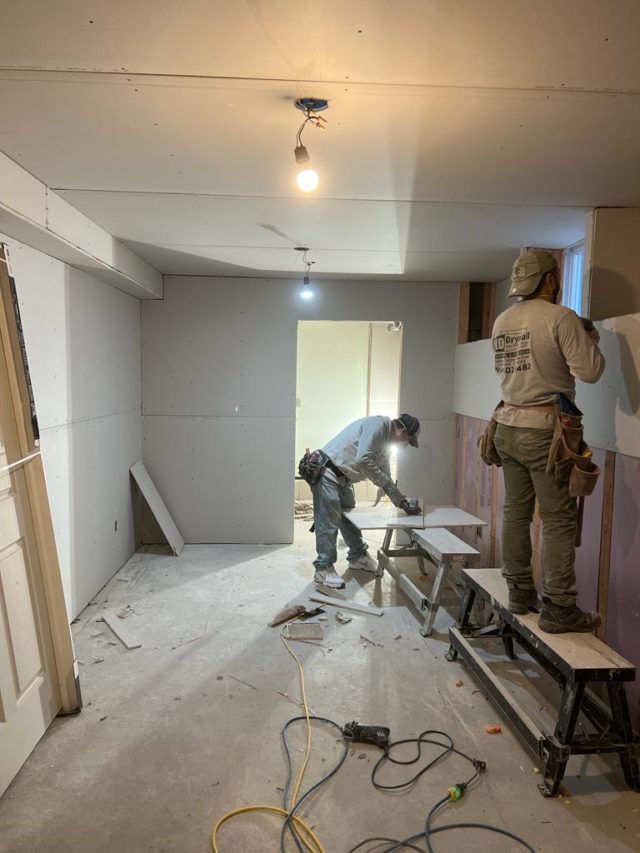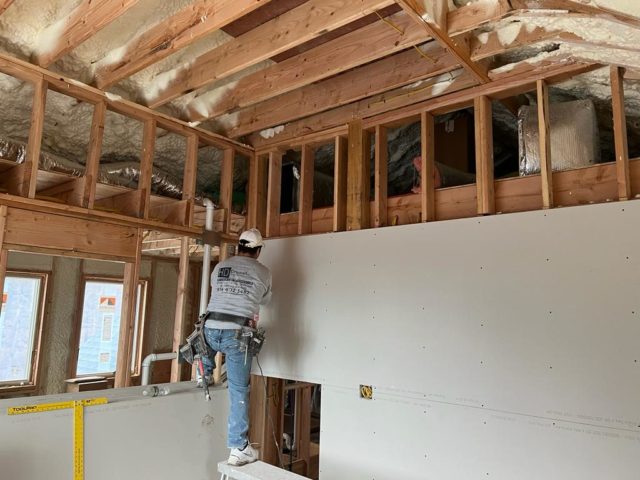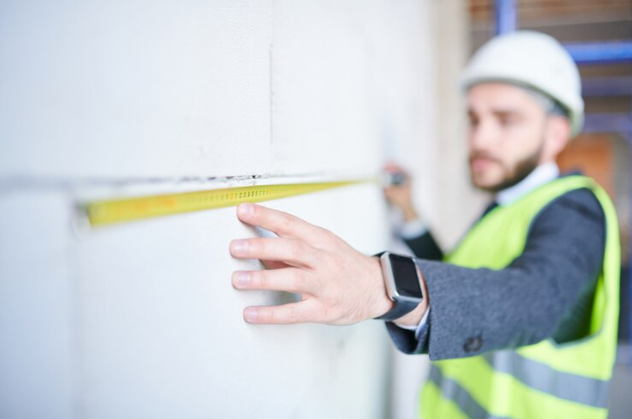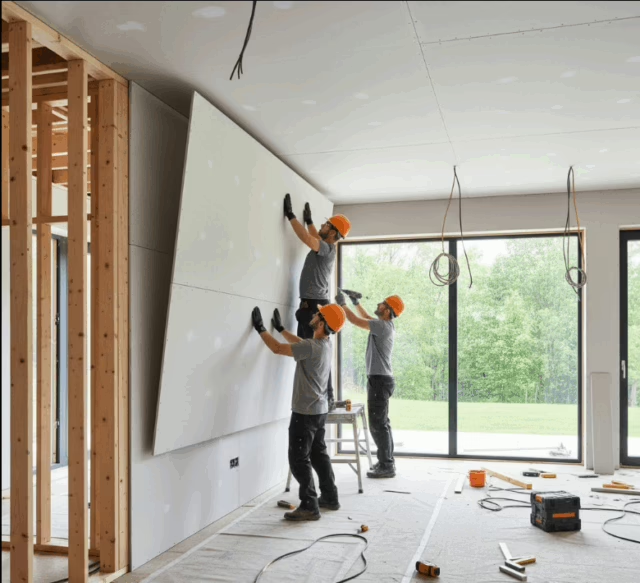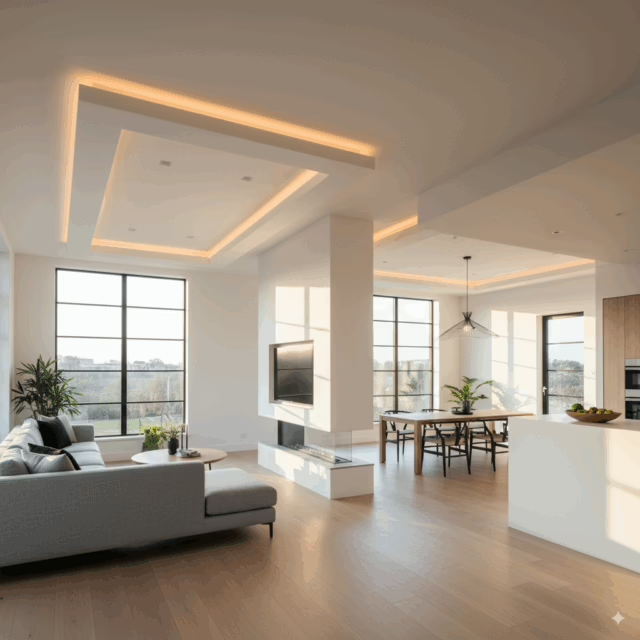Indoor air quality (IAQ) is a top priority in modern construction and renovation, especially as we spend nearly 90% of our time indoors. From homes and offices to schools and healthcare facilities, maintaining clean and breathable air inside buildings is essential. One often-overlooked contributor to healthier interiors? Drywall.
This guide explores how drywall—when chosen and installed strategically—can significantly boost indoor air quality by managing humidity, minimizing harmful emissions, and supporting overall wellness in your spaces.
Why Is Indoor Air Quality So Important?
Poor indoor air can lead to a range of health issues, including:
- Allergies and asthma
- Fatigue and headaches
- Long-term respiratory problems
- Reduced cognitive performance
Drywall plays an unexpected yet vital role in preventing many of these issues by acting as a first line of defense against pollutants and humidity-related problems.
🔍 Discover more ways we design for wellness on our Services page.
How Drywall Contributes to Better Indoor Air Quality
1. VOC Absorption
Some drywall products are specially formulated to capture and neutralize volatile organic compounds (VOCs) such as formaldehyde. These compounds often come from:
- Paints and adhesives
- Furniture and flooring
- Cleaning products
Using drywall that absorbs VOCs can reduce pollutant levels and improve air freshness for years after installation.
2. Moisture and Mold Resistance
Moisture buildup leads to mold growth—one of the top causes of poor air quality. Moisture-resistant drywall (like green board or purple board) prevents mold from forming in:
- Bathrooms and laundry rooms
- Kitchens and basements
- Utility closets
This contributes to a safer and healthier indoor environment, especially for allergy-prone individuals.
👉 See how we apply moisture-blocking solutions on our Facebook page.
3. Dust Control and Clean Installation
High-quality drywall allows for dust-reducing compounds and cleaner sanding processes. Low-dust finishing compounds help maintain indoor air purity during and after construction.
4. Temperature and Humidity Regulation
When paired with proper insulation, drywall supports consistent indoor temperatures and humidity levels—reducing strain on HVAC systems and limiting airborne irritants.
Learn about our energy-efficient builds on the About Us page.
Best Types of Drywall for Healthy Air Quality
Choosing the right drywall product makes a major difference in air cleanliness and comfort.
| Drywall Type | IAQ Benefit |
|---|---|
| VOC-absorbing drywall | Reduces formaldehyde and VOC levels |
| Moisture-resistant drywall | Prevents mold growth in wet areas |
| Paperless drywall | Resists moisture and microbial buildup |
| Low-dust joint compounds | Minimizes airborne particles during install |
📩 Want to select drywall that improves air in your home or office? Contact us for expert help.
Design and Installation Best Practices
For maximum air quality benefits:
- Use airtight drywall installation techniques to minimize leaks
- Install vapor barriers where needed in humid zones
- Choose low-VOC primers and paints
- Seal all joints properly to avoid moisture infiltration
- Ensure proper ventilation in enclosed rooms
Looking for a health-focused drywall upgrade? Check out our HD Drywall Services tailored to wellness-focused construction.
Final Thoughts
When it comes to healthy living and working environments, every building material counts. Choosing drywall designed to enhance indoor air quality is a smart investment in your comfort, health, and long-term peace of mind.
At HD Drywall, we install advanced drywall systems that support clean air, moisture resistance, and environmental well-being. Let us help you create interior spaces that feel as good as they look.
Frequently Asked Questions
1. Does drywall really affect indoor air quality?
Yes. Drywall can absorb VOCs, resist mold, and regulate humidity, all of which improve air quality.
2. What drywall is best for allergy sufferers?
Paperless, moisture-resistant, and VOC-absorbing drywall are ideal for creating hypoallergenic environments.
3. Can drywall help control moisture in bathrooms?
Absolutely. Moisture-resistant and mold-resistant drywall are designed specifically for wet and humid spaces.
4. Is drywall safe for people with asthma?
When installed with low-VOC compounds and proper sealing, drywall supports healthy air conditions for asthmatic individuals.
💨 Breathe easier with drywall solutions designed for better indoor air. Contact HD Drywall to build healthier spaces today. 🌿
#Indoor air quality

